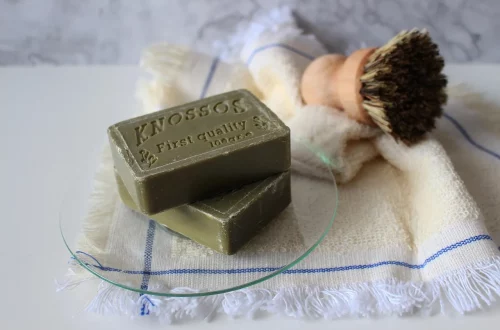
Maximize Your Workout: The Benefits of Thigh Pro Exercises
Maximizing your workout is a goal shared by fitness enthusiasts and casual gym-goers alike. As we push the boundaries of our physical capabilities, it becomes increasingly essential to focus not only on the intensity of our workouts but also on the specific exercises that can lead to greater overall benefits. One such area that often deserves more attention is the thigh region. Strong thighs are crucial not just for aesthetics but also for functional strength, stability, and endurance. They play a pivotal role in various physical activities, from running and cycling to squatting and lifting.
Incorporating targeted thigh exercises into your workout routine can yield significant results. These exercises can enhance muscle tone, improve athletic performance, and even contribute to injury prevention. Moreover, the thighs house some of the largest muscle groups in the body, making them key players in calorie burning and metabolic rate enhancement. The right thigh exercises can elevate your heart rate, aid in weight management, and improve overall fitness levels. By focusing on this often-neglected area, you can maximize your workout and achieve a well-rounded fitness regimen that not only strengthens your lower body but also promotes overall health and well-being.
The Importance of Strong Thigh Muscles
Strong thigh muscles are vital for more than just aesthetic appeal; they provide the foundation for many movements and activities we perform daily. The thigh muscles are primarily composed of the quadriceps at the front and the hamstrings at the back. Together, they work to facilitate knee movement, stabilize the hips, and contribute to overall balance.
When engaging in physical activities, strong thighs help generate power and speed. For instance, sprinters rely heavily on their thigh muscles to propel themselves forward, while cyclists depend on them for efficient pedaling. In everyday life, strong thighs support activities such as climbing stairs, lifting objects, and even walking. This makes them essential not only for athletes but also for individuals seeking to enhance their functional strength.
Additionally, strong thigh muscles play a critical role in injury prevention. Weak thigh muscles can lead to imbalances and increase the risk of injuries, particularly in the knees and hips. By incorporating exercises that target the thighs, individuals can reinforce these muscles, thus providing better support to the joints and reducing the likelihood of strains and sprains. Furthermore, balancing the strength between the quadriceps and hamstrings is crucial for maintaining proper biomechanics and posture, ultimately contributing to long-term health.
Moreover, having strong thigh muscles can improve metabolic function. Since the thighs contain large muscle groups, working them out can significantly increase calorie expenditure during and after workouts. This thermogenic effect is beneficial for weight management and can aid in fat loss when combined with a healthy diet. Therefore, prioritizing thigh exercises can not only enhance physical performance but also support overall fitness goals.
Effective Exercises for Thigh Strengthening
When it comes to strengthening the thighs, a variety of exercises can be incorporated into your workout routine. Some of the most effective thigh exercises include squats, lunges, and leg presses. Each of these exercises targets different aspects of the thigh muscles and can be modified to suit various fitness levels.
Squats are one of the most fundamental exercises for building thigh strength. They engage the quadriceps, hamstrings, and glutes, making them a compound movement that provides comprehensive benefits. To perform a squat, stand with your feet shoulder-width apart and lower your body as if sitting back into a chair, keeping your chest up and knees aligned with your toes. Variations such as goblet squats or barbell squats can increase the intensity and challenge your muscles further.
Lunges are another effective exercise that can enhance thigh strength and stability. They target the quadriceps and hamstrings while also engaging the core for balance. To perform a lunge, step forward with one leg and lower your body until both knees are bent at approximately 90-degree angles. Returning to the starting position and alternating legs can be effective for building strength and coordination. Variations such as walking lunges or reverse lunges can also be incorporated for added challenge.
Leg presses are typically performed on a machine in the gym and offer a controlled environment for targeting the thighs. This exercise allows you to safely lift heavier weights, focusing on the quadriceps while also engaging the hamstrings and glutes. Adjusting the foot placement on the platform can further emphasize different portions of the thigh muscles.
Incorporating a mix of these exercises into your routine can help create a well-rounded program that effectively targets the thighs, leading to improved strength and overall fitness.
Thigh Exercises for Endurance and Flexibility
While strength is essential, endurance and flexibility are equally important for overall thigh health and performance. Incorporating exercises that enhance these aspects can lead to better results in your fitness journey.
One effective way to improve endurance in the thigh muscles is through high-repetition bodyweight exercises. Movements such as wall sits and stair climbing can build muscular endurance, which is crucial for activities that require prolonged exertion. Wall sits involve leaning against a wall with your knees bent, holding the position for as long as possible. This is a great way to engage the quadriceps and build stamina without excess strain on the joints.
Flexibility is another critical aspect often overlooked in thigh training. Tight thigh muscles can lead to discomfort and limit mobility. Stretching exercises such as quad stretches and hamstring stretches can help maintain flexibility. To perform a quad stretch, stand on one leg, grab your ankle behind you, and pull it towards your glutes while maintaining balance. For a hamstring stretch, sit with one leg extended and reach towards your toes to elongate the muscle.
Incorporating yoga or Pilates into your routine can also enhance both endurance and flexibility. Many poses focus on strengthening the thighs while promoting lengthening and mobility. This combination is beneficial for athletes and individuals seeking to improve their overall fitness levels.
Moreover, engaging in dynamic stretching before workouts can warm up the thigh muscles and prepare them for activity. Movements such as leg swings and hip circles help increase blood flow and flexibility, reducing the risk of injury during more intense exercises.
By focusing on endurance and flexibility alongside strength training, you can create a comprehensive thigh workout that supports overall health and performance.
Nutrition and Recovery for Thigh Muscle Development
While exercise is crucial for thigh muscle development, nutrition and recovery play equally important roles. Proper fueling and recovery strategies can enhance the benefits of your workouts and support muscle growth and repair.
To promote muscle development, it is essential to consume a balanced diet rich in protein, healthy fats, and carbohydrates. Protein is particularly vital for muscle repair and growth, so incorporating sources such as lean meats, fish, legumes, and dairy can support your thigh training efforts. Carbohydrates provide the energy needed for intense workouts, while healthy fats contribute to overall health and hormone regulation.
Hydration is another critical aspect to consider. Adequate fluid intake supports overall bodily functions and helps maintain performance levels during exercise. Dehydration can lead to fatigue and reduced strength, hindering your workout results. Therefore, it’s essential to drink water before, during, and after your workouts.
Recovery is equally important for muscle development. Allowing time for your thigh muscles to recover can prevent overtraining and reduce the risk of injury. Incorporating rest days into your routine and considering active recovery techniques, such as light stretching or yoga, can help facilitate muscle repair. Additionally, utilizing foam rollers or massage therapy can alleviate muscle soreness and promote blood flow to the thighs.
In summary, focusing on nutrition and recovery in conjunction with thigh exercises can maximize your workout results, leading to stronger and healthier thigh muscles.
In conclusion, the benefits of incorporating thigh exercises into your workout routine are multifaceted, ranging from improved strength and endurance to enhanced flexibility and overall fitness. By understanding the importance of strong thigh muscles, engaging in effective exercises, promoting endurance and flexibility, and prioritizing nutrition and recovery, you can maximize your workout potential and achieve your fitness goals.
**Disclaimer:** This article is for informational purposes only and does not constitute medical advice. Always consult a healthcare professional for any health-related issues or concerns.




